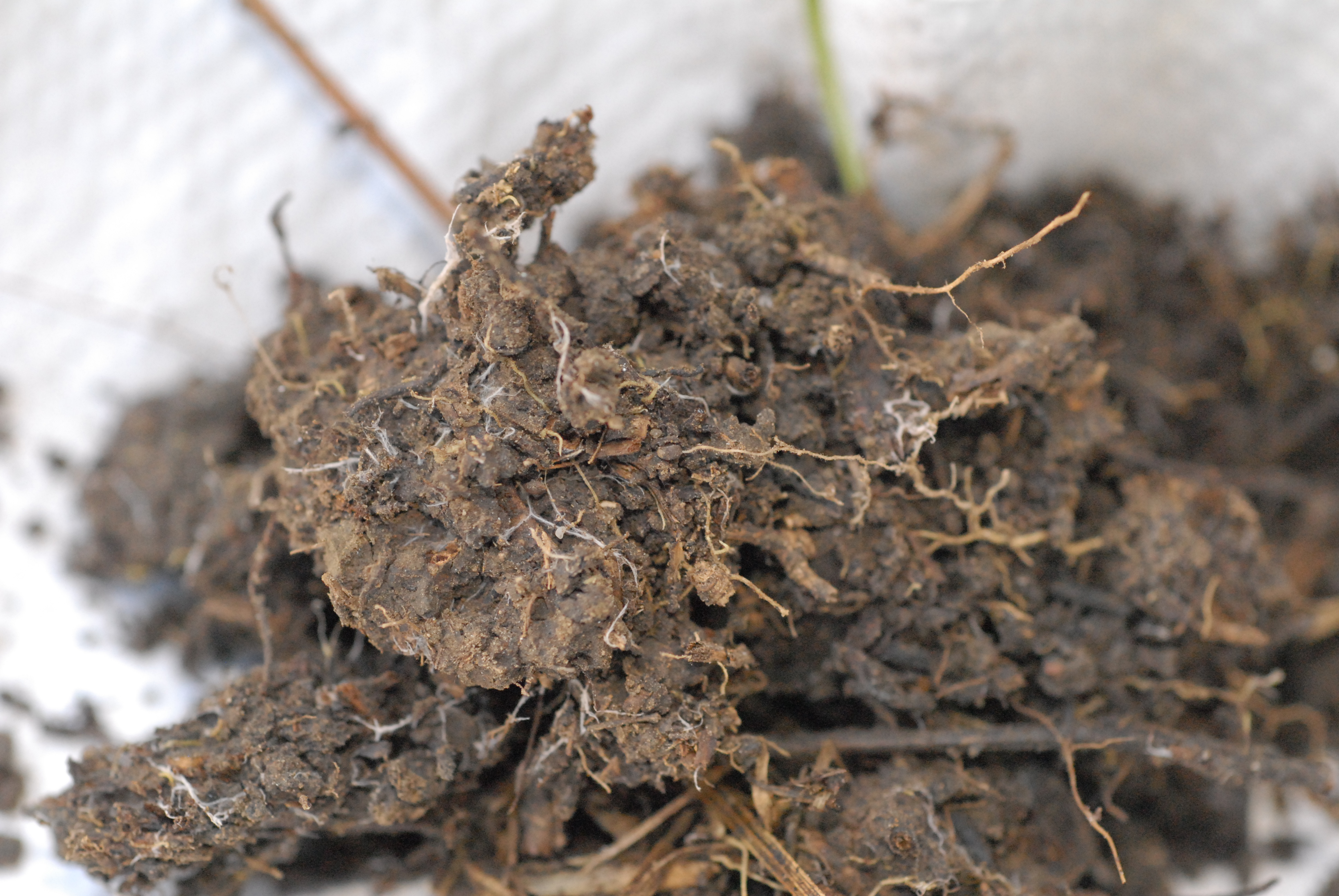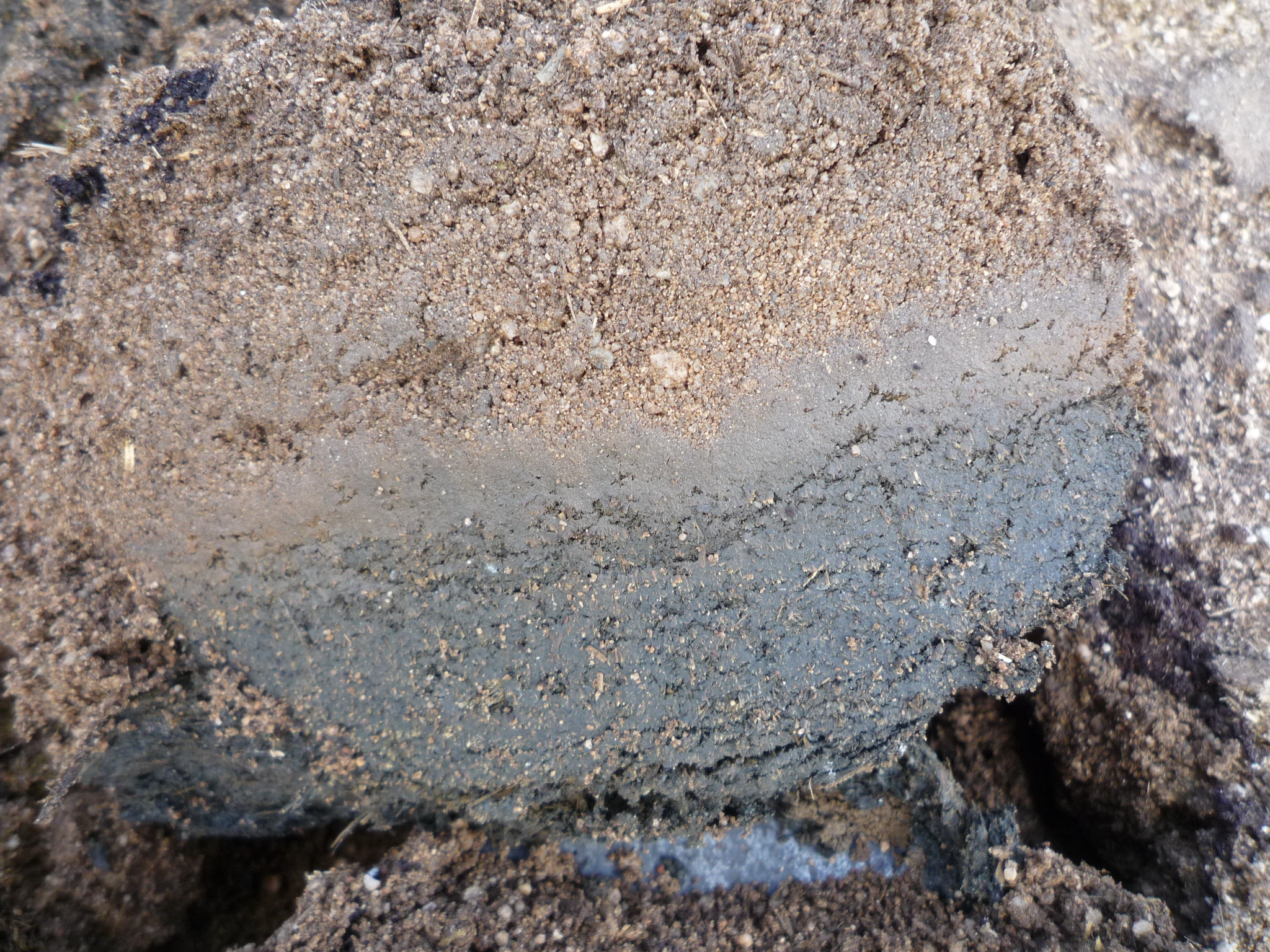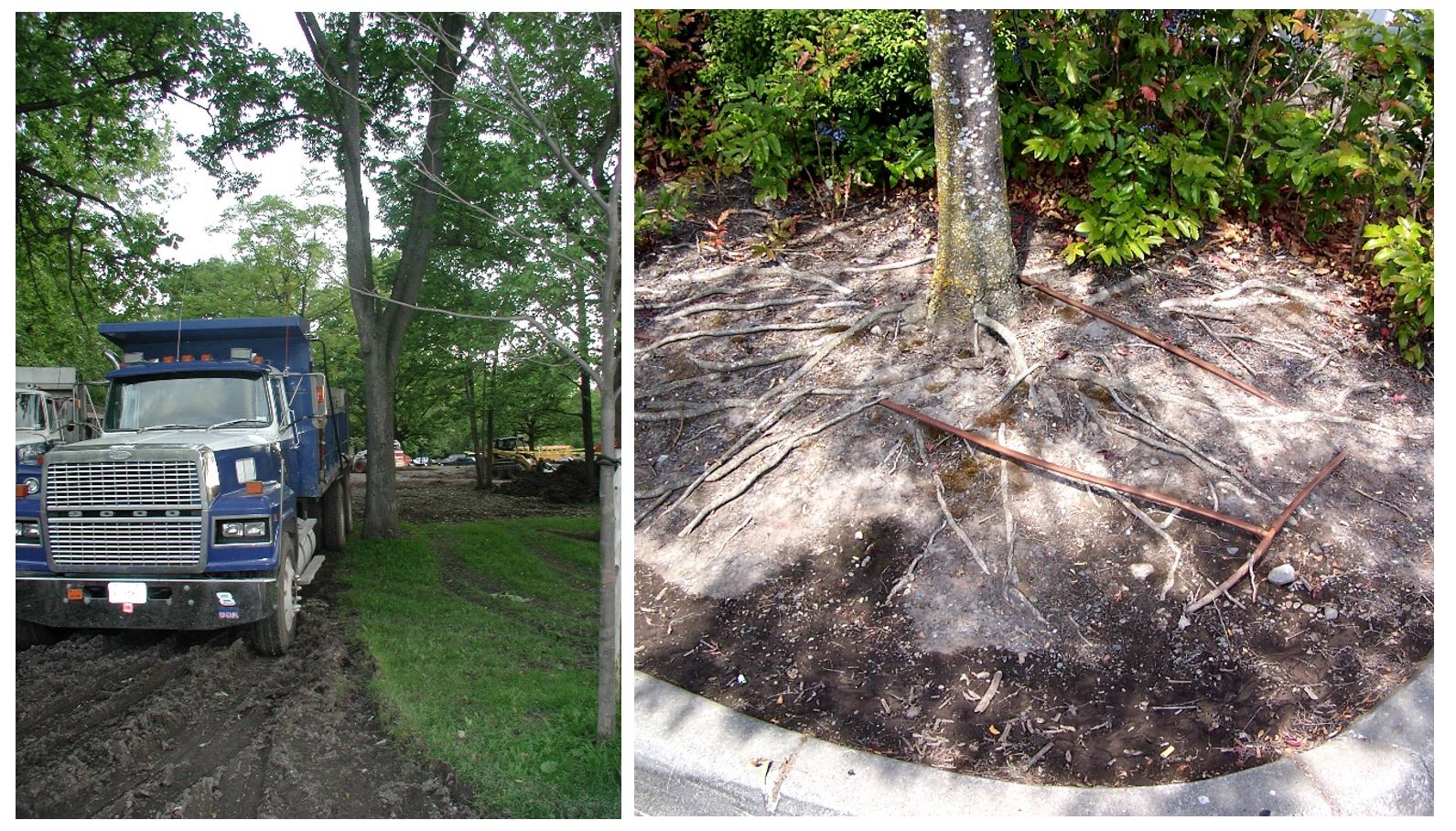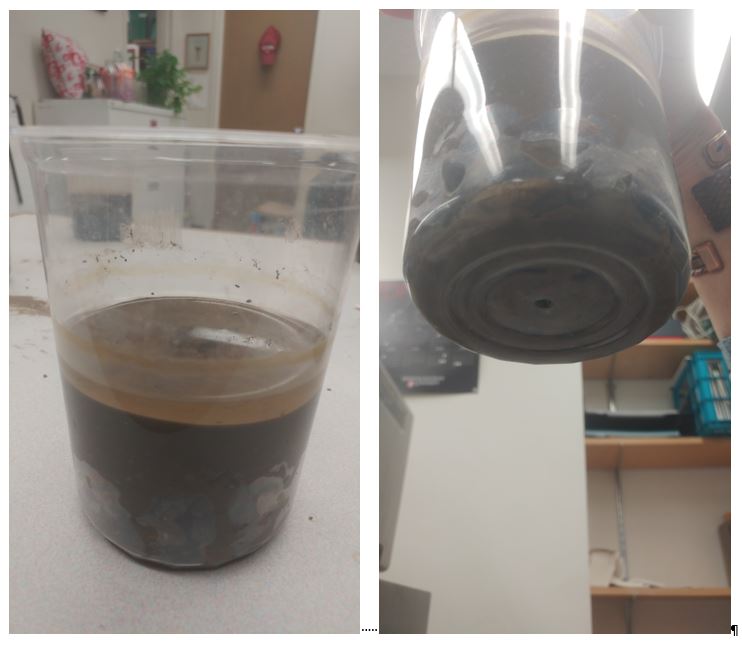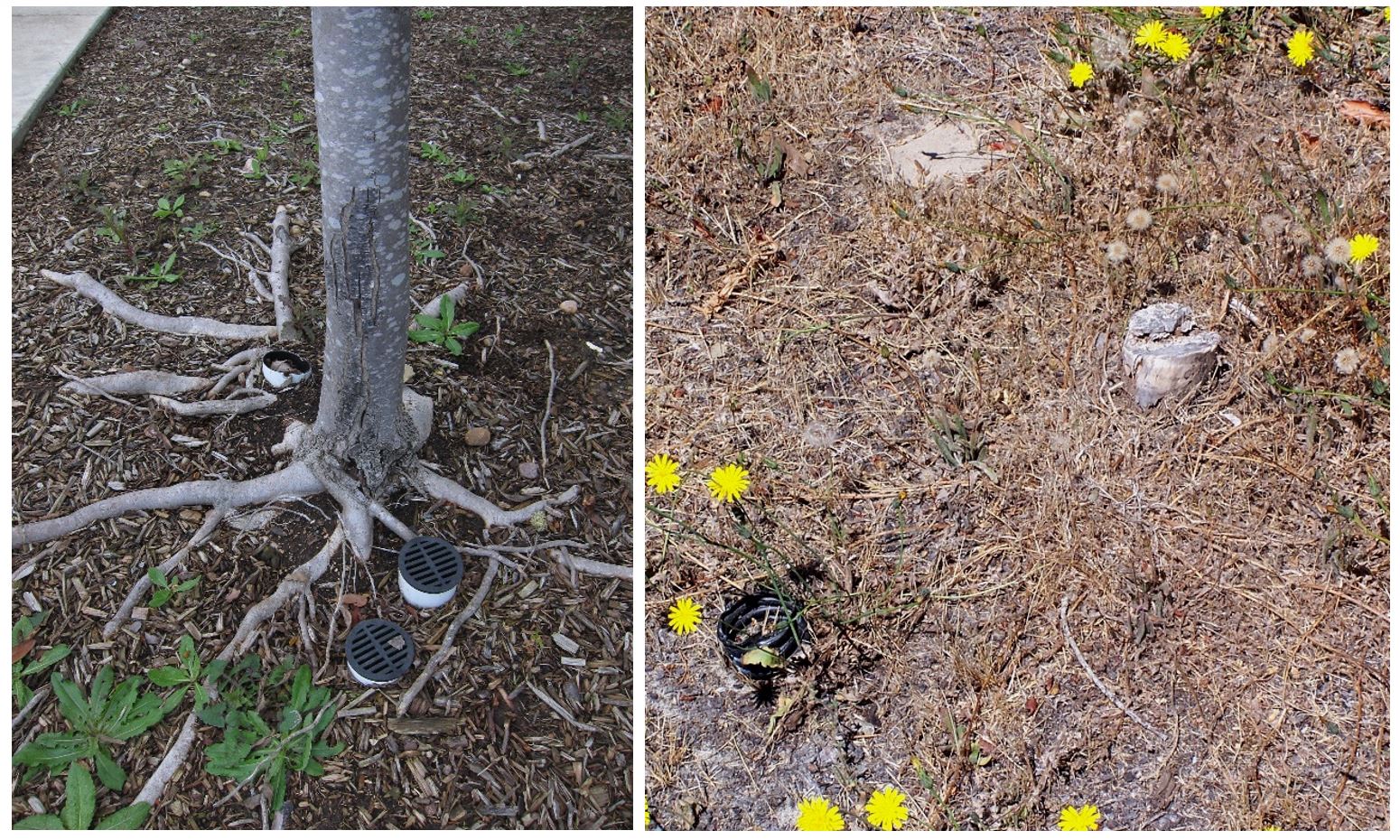Journal of the NACAA
ISSN 2158-9429
Volume 12, Issue 2 - December, 2019
Soil Myth Busting for Extension Educators: Reviewing the Literature on Soil Structure and Functionality
- Chalker-Scott, L. , Extension Specialist And Associate Professor, Washington State University
Downer, A.J., Farm Advisor, University of California
ABSTRACT
Soils found in home gardens and public landscapes usually bear little resemblance to the original soil. Native soils are formed through centuries of interactions between climatic factors, local environmental factors, and the biological components of the soil. In contrast, soils found in developed areas (called “urban” soils throughout this article) are often distinctly layered, compacted, and artificially amended. Commercial topsoils, which are often called designed soils or landscape fill, bear little resemblance to natural topsoil as they generally contain abundant organic material and sand but relatively little topsoil. Unfortunately, many gardeners and landscape professionals are unaware of these differences and how they affect soil functionality and plant life. This lack of understanding, combined with popular soil management practices and products, can create soil conditions that are injurious to soil and plant life. In this article we deconstruct four common soil management myths and offer better methods to manage urban soils sustainably.
Introduction
Most people with a personal or professional interest in gardens and landscapes are familiar with the soil triangle (Figure 1). The relative percentages of clay, silt and sand determine soil texture and function. Uncompacted sandy and silty soils are well drained, but nutrient poor; uncompacted clay soils are nutrient rich but have slow drainage. The perfect soil for growing plants is one that has adequate drainage and nutrient availability (Handrek and Black, 2002). Such soils are loams and contain mixtures of clay, silt and sand. Natural soils also contain organic matter around 1-6% of the total soil weight. Wetland soils, in contrast, have much higher levels of organic material. All of these natural soil types develop over centuries of interactions among climatic, geographic, environmental, and biological factors (Vanwalleghem et al., 2013).

Figure 1. A soil triangle (image courtesy of Charlotte Scott).
Soil texture is not the same thing as soil structure: soil of any texture can be well- or poorly-structured. A well-structured soil has connected pore spaces between soil aggregates (or peds) that allow movement of air and water within the soil (Figure 2). This same soil can become poorly-structured from compaction.
Figure 2. A well-structured soil has peds, pore spaces, roots, and fungal hyphae (photo by Jim Downer).
While well-structured soils with ideal textures for plant growth occur in nature, they are less likely to be found in developed areas as much of the original soil may be removed during construction. Soils brought in later for planting beds are increasingly “designed topsoils” which are heavily organic, sandy mixes with little original topsoil. Usually laid over compacted subsoil, these urban soils bear little if any resemblance to the original soils and their functionality is often impaired (Figure 3). Further damage is incurred through compaction, erosion (Figures 4a-b), and inappropriate additions of fertilizers and pesticides. Urban soils are frequently poorly drained, leading people to think they are heavy clay soils and need to be “fixed.” Well-intentioned gardeners and landscape professionals try to solve these problems by amending soils or adding gadgets to improve drainage. Unfortunately, most of these practices do nothing to solve the perceived problems and instead damage both soil and plant health (Spomer, 1983).
Figure 3. Soil textural layers are impervious to water movement and can become anaerobic, as indicated by the blue-gray color (reduced form of soil metals under low oxygen conditions). Photo by Jim Downer.
Figures 4a-b. Compaction (a) and erosion (b) of urban soils destroys structure and reduces functionality (photos by Linda Chalker-Scott).
The young field of urban soil science is rapidly expanding, with new research on modified soils in residential and public landscapes. Few Extension educators have an academic background in urban soil science and may be as confused as clientele about what constitutes sound, research-based recommendations in managing urban soils.
The purposes of this literature review are:
- to identify some popular misperceptions about managing urban soils;
- to provide a brief, science-based explanation on why these beliefs are not accurate;
- to provide links to published, peer-reviewed citations that supports the explanation and can be distributed to clientele; and
- to describe sustainable methods of managing urban soils based on current and relevant applied soil sciences.
Myth Deconstruction
Myth #1: “Amend soils with coarse inorganic material to improve water and air movement before planting”
Many gardeners and landscape professionals believe that heavy or poorly-drained soils can be amended or engineered to increase water and air movement before installing landscape plants. While adding coarse materials like sand or pebbles is thought to improve drainage, in fact it does the opposite. Incorporated amendments create both a vertical and a horizontal textural barrier to the surrounding, unamended soil. The barriers reduce the ability of water and oxygen to move through the soil, creating a perched water table (Figure 5; Hsieh and Gardner, 1959). Perched water tables can occur in containers, in planting beds, or throughout entire landscapes. While the original work by Hsieh and Gardner (1959) may seem dated, the results have not been challenged by newer research and are widely accepted as accurate descriptions of soil-water dynamics.
.jpg)
Figure 5. Perched water table development caused by soil texture interface (photo from Hsieh and Gardner, 1959).
It is easiest to understand this phenomenon by setting up a clear container with a layer of pebbles at the bottom, adding moist soil on top of the layer, and then pouring in water (Figure 6). This is a common practice among gardeners who have container plants and believe that a layer of gravel will improve drainage. Instead, water moves uniformly through the soil until it reaches the interface. The textural interface greatly reduces water movement, so water collects in the soil layer. Only when enough water has collected so that gravity takes over will the interface be breached. (This is also the mechanism behind French drains, which will allow removal of water from super-saturated soils until the gravitational water has drained away. The soil remains saturated.)
Figure 6. Perched water table created in a container by soil underlain by gravel added “for drainage” (photo by Linda Chalker-Scott).
Perched water tables are also created when sand or other coarse inorganic materials are added to soils during planting. The textural interfaces are both horizontal and vertical, creating “bathtubs” that are waterlogged during the rainy season and empty during the summer, stressing the plant roots and leading to early demise (Figures 7a-b).
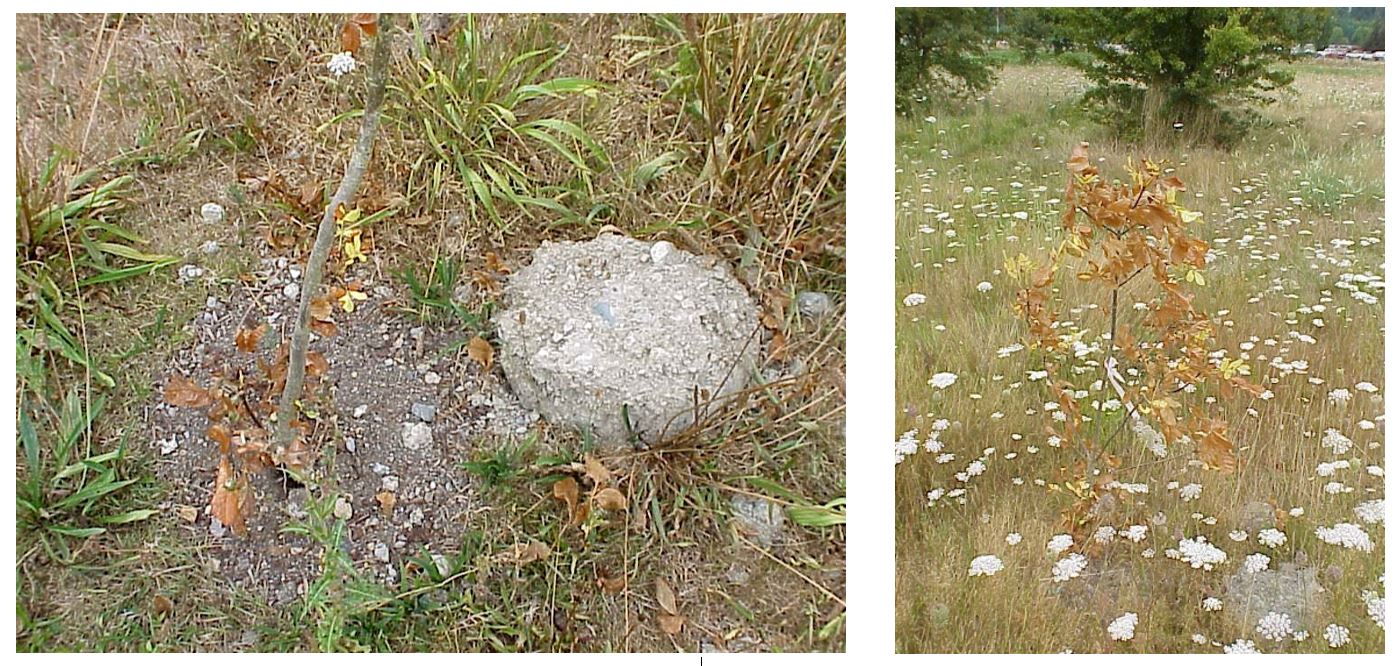
Figure 7a-b. Native soil was removed and amendment added to planting hole during planting (a). Textural differences between amended backfill and surrounding soil caused early tree death (b). Photos by Linda Chalker-Scott.
Now, extend this phenomenon to the entire landscape. Many residential and public landscapes have been created by layering commercial topsoil or fill soil onto the compacted subsoil left during home construction. The interface that results from these two different soil types is nearly impervious, as seen by the waterlogging after rainfall or irrigation (Figure 8). These soils lack oxygen, so plants in newly installed landscapes will have a difficult time establishing a functional root system. Those that survive will have very shallow root systems, and will be easily dislodged during windstorms (Figure 9).

Figure 8. Compacted and/or amended soils will often have standing water (photo courtesy of N. Chadwick through Creative Commons).
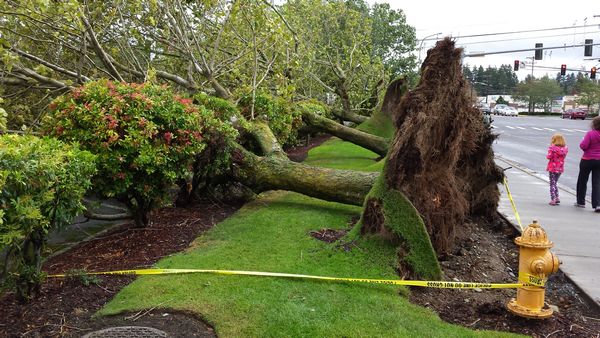
Figure 9. Shallowly rooted trees have little defense against windstorms.
Inorganic amendments are not the only scientifically unsound method promoted to increase soil oxygen or water availability. “Aeration tubes” are 3-4” diameter perforated plastic pipes which are installed vertically to the bottom of the planting hole along with the tree (Figures 10a-b). This is a common practice for trees along streets, in parking lots, or other environmentally stressful sites. Proponents claim that the tubes increase oxygen supply to the roots and can be used for summer watering.
Figures 10a-b. Root snorkels installed during planting (a) often outlive the trees (b). (Photo 10a by Jim Downer; photo 10b by Linda Chalker-Scott).
One only has to consider root architecture to understand that this method will not succeed in supporting roots with either water or oxygen. Fine roots – those that absorb water and nutrients – grow where oxygen is most plentiful. Therefore, fine roots will be close to the soil surface to obtain what they require, and this root architecture is even more pronounced in compacted urban soils.
As roots grow, they resemble spokes on a wheel, creating a relatively shallow but horizontally extensive system (Figure 11). Deep, perforated tubes, such as “aeration tubes,” deliver water and oxygen far below the root zone and would have no effect on root growth. Research has borne this observation out, finding no improvement in soil oxygen levels, improved root development, or increased plant growth (McDonald et al., 2004; Rentz et al., 2003).
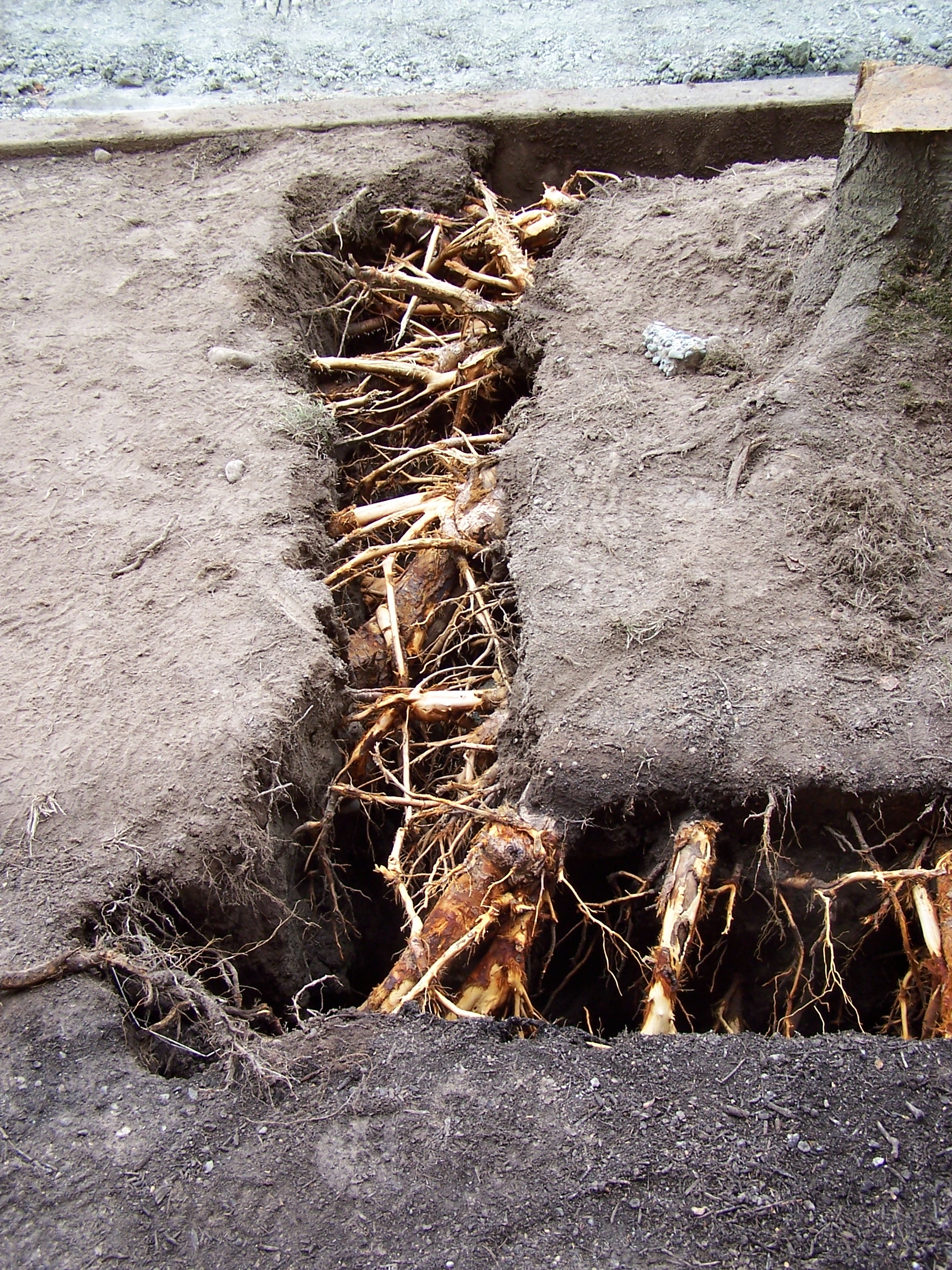
Figure 11. Tree roots have substantial horizontal spread but create a relatively shallow root system (photo by Linda Chalker-Scott).
In general, the reason that landscape soils may have too little oxygen is because they are compacted; compaction reduces pore space, which means less space for holding oxygen. Bare soil, unprotected from foot traffic and eroded by the wind, can be compacted to the density of rock (Figure 12). The best way to improve soil porosity is to protect the soil with a thick layer of coarse, organic mulch (Chalker-Scott, 2007).
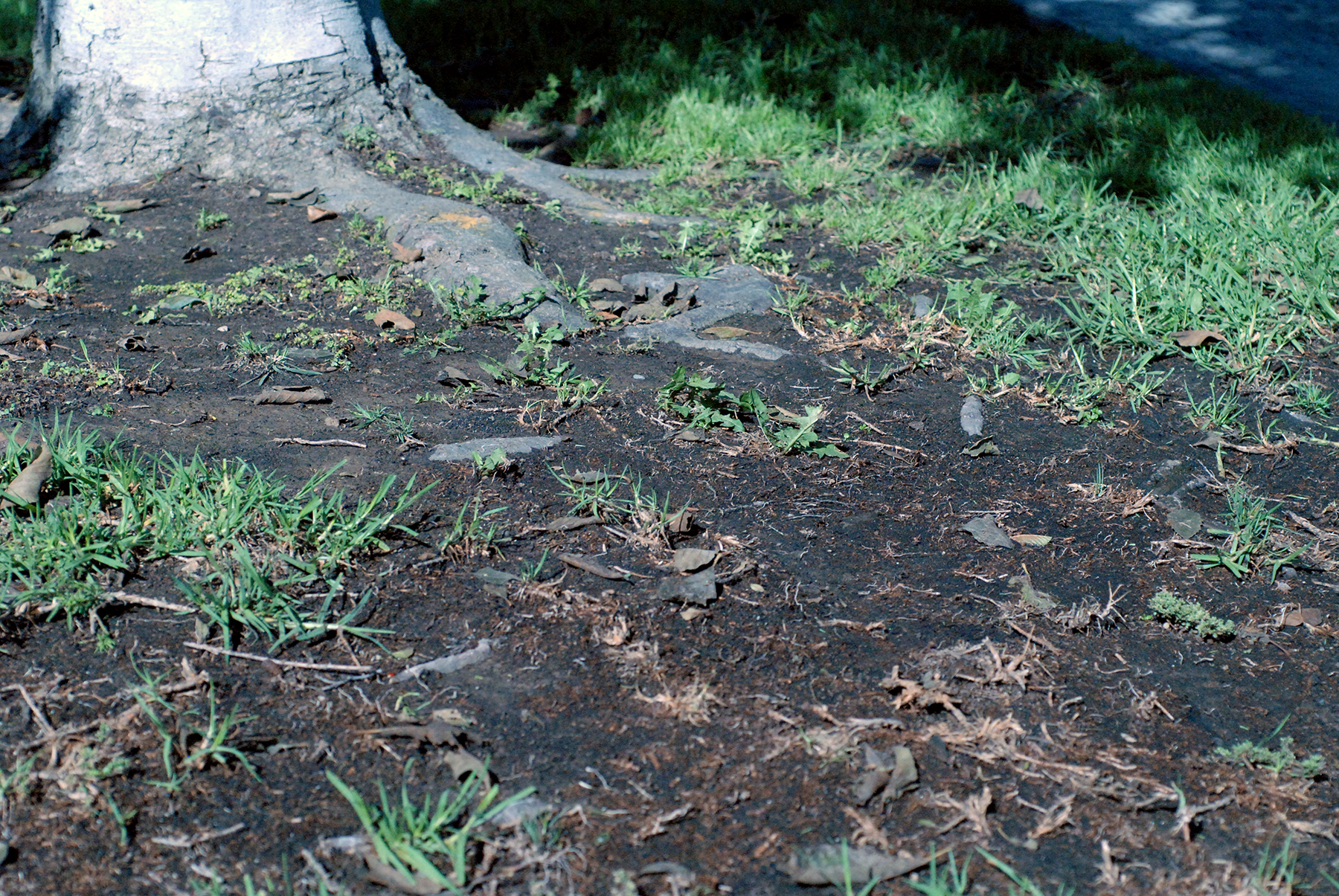
Figure 12. A compacted soil around the base of a tree cannot even support much weed growth (photo by Jim Downer).
Myth #2: “Add organic amendments to backfill soil for better plant establishment and growth”
Many gardeners, landscape professionals and nursery personnel believe that adding organic matter to the planting hole (Figure 13) will improve establishment and survival for everything from bedding plants to trees. Landscape architects write specifications that offer amendment requirements with little understanding of the long-term consequences of these additions. Harris et al. (2004) reviewed the literature to this point and suggests that backfill is of little benefit to tree establishment. While a friable, organic backfill will produce an abundant fine root system in the amended hole, this does not encourage root development outside the planting hole where a longer, less branched root system is necessary for tree and shrub establishment and survival. Regardless of soil type, vigorous root exploration of the soil system is necessary for tree establishment and survival.
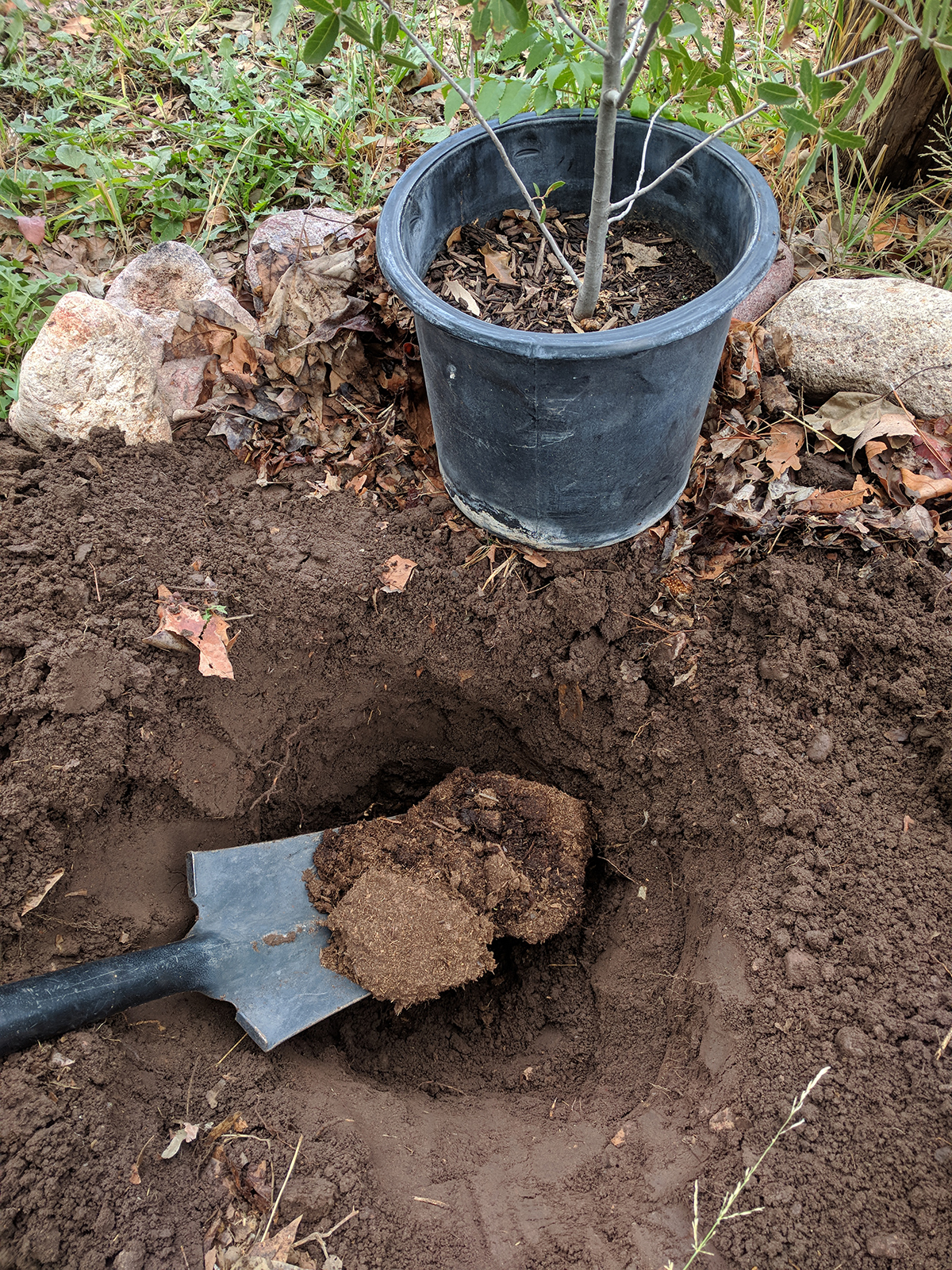
Figure 13. Peat moss and other soil amendments are commonly used during plant installation (photo by Jim Downer).
As seen earlier with inorganic amendments, organic material added to the backfill soil also creates an interface between the backfill and the surrounding soil. Despite perceptions that additional organic material would benefit newly planted trees and shrubs, research throughout the last several decades has not supported this perception. Generally, woody plants planted in amended holes performed no better, long term, than those planted without amendments (Corely, 1984; Ferrini and Baietto, 2007; Gillman, 2004; Hodel et al., 2006; Watson et al., 1993), as the roots did not easily pass through the interface between soil textures (Corely, 1984). There is also evidence that some amendments, like manures, can retard or even kill newly planted landscape trees due to salt toxicity (Hodge, 2012).
While some studies support using amendments in the backfill, especially short term, most report that amended backfills are ineffective or harmful to plant establishment. The body of published research supports the use of unamended backfill soil as amended soil has no consistent, reliable benefit to woody plant performance. In addition to creating textural differences, the process of amending soil (especially in large areas) destroys soil structure and will lead to soil subsidence as the excess organic material decomposes (Figure 14). The goal of preserving soil structure is best met by digging as small a hole as possible and using only unamended backfill. Topdressing the planting site with a layer of coarse woody mulch is beneficial to soils as well as plants, as mulching causes no structural damage to the soil and enhances increased structure as organic resides are gradually added to the soil below the mulch layer.
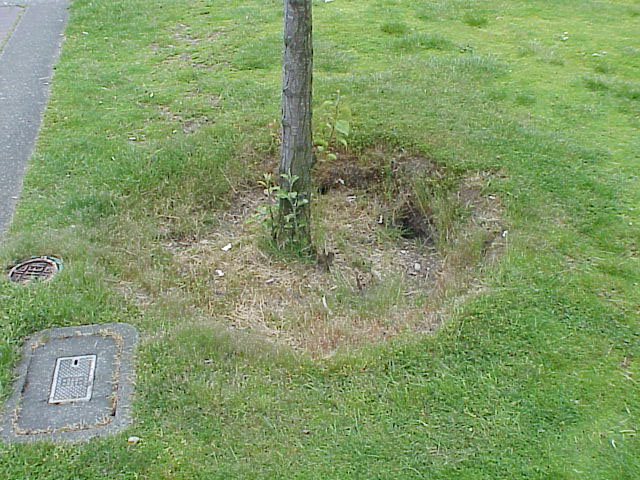
Figure 14. Soil subsidence in an amended planting hole after organic amendment has decomposed and inorganic particles have settled (photo by Linda Chalker-Scott).
Myth #3: “Soil conditioners will reduce soil compaction, improve drainage and aeration, and bioactivate soils”
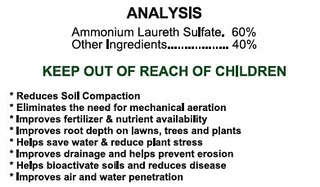

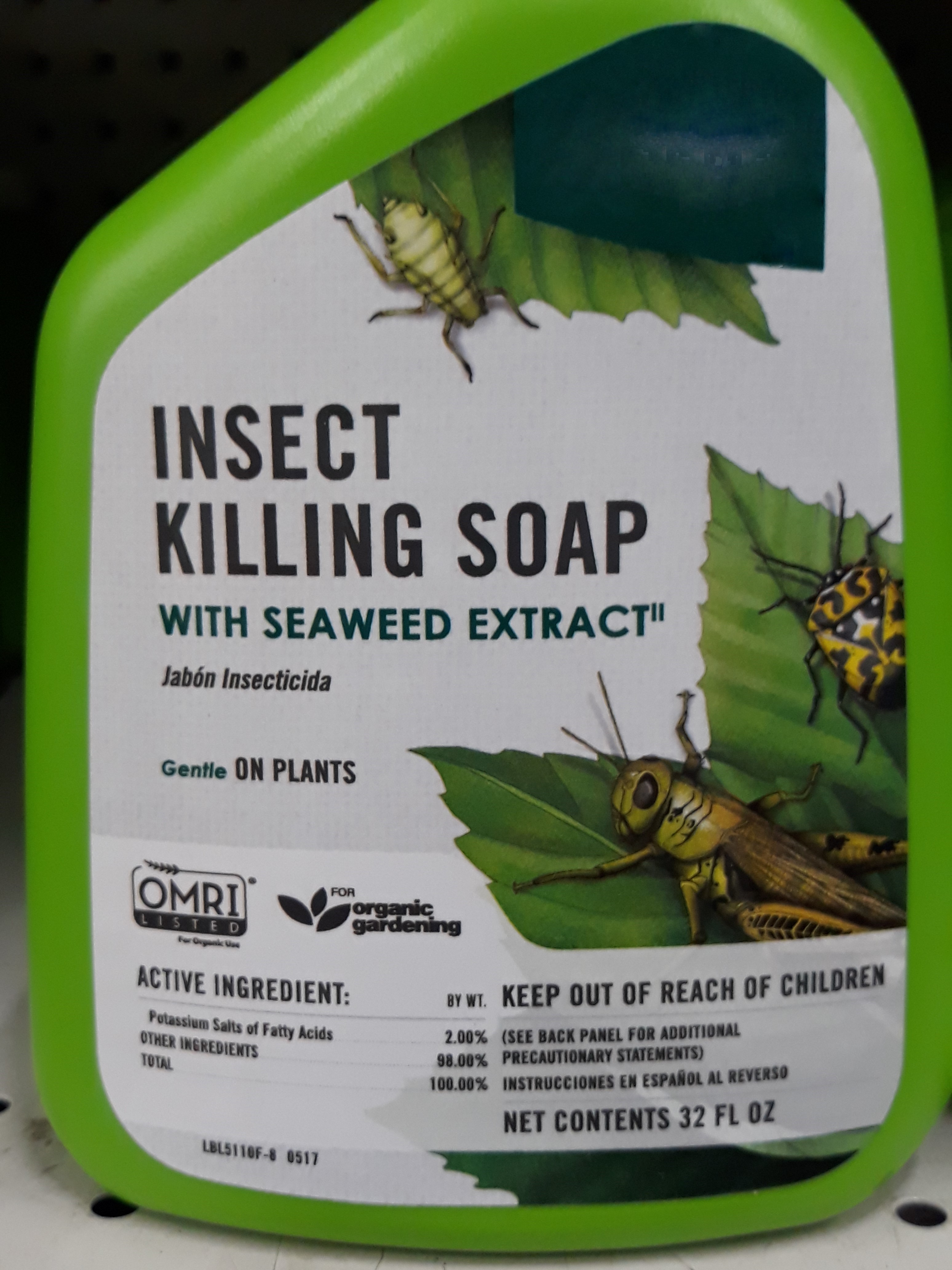
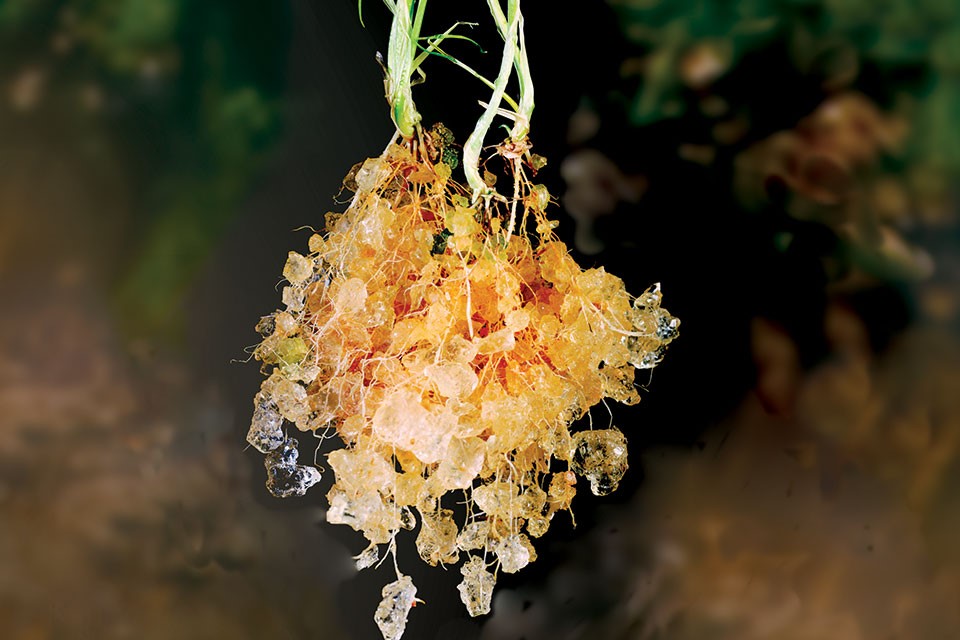
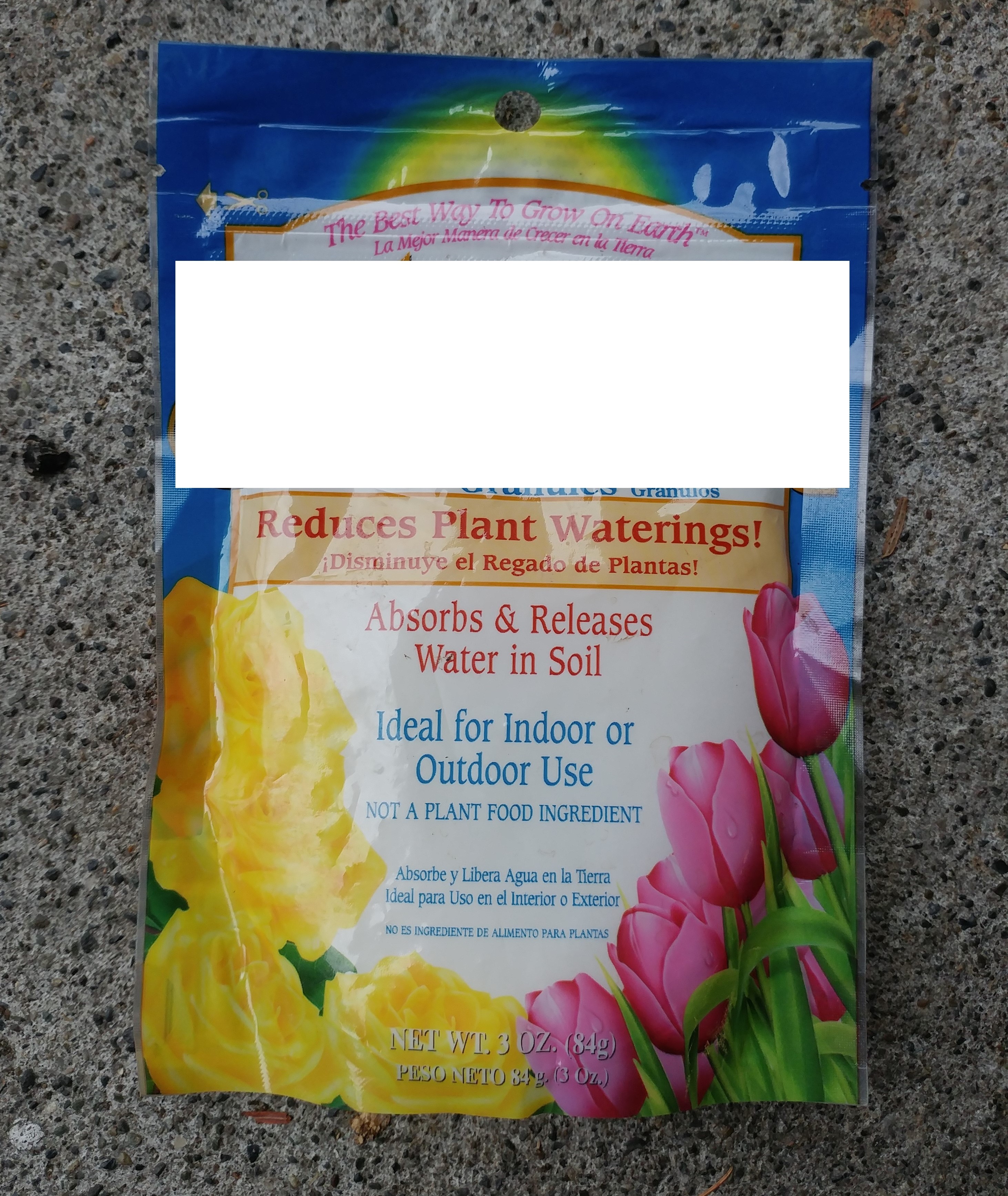
Getting to know your soils up close and personal
All of the myths described in this article are based on an incomplete understanding of soil structure and how products and practices can affect soil functionality. There are some simple, low-cost methods that home gardeners and landscape professionals can use to determine their soil texture. The knowledge gleaned from these methods will help them learn to manage their soils in an environmentally sustainable fashion.
The jar method:
The jar method allows one to see the major soil components separate when mixed with water in a capped jar. A cup or so of soil (with no mulch or other visible organic debris) is placed in a jar, along with water to nearly fill it. The jar is capped, shaken to break up the soil, and then left to sit for a day or two. Coarse particles (sand) settle first, with silt and clay layers settling out later (Figure 20). The resulting layers can be measured to estimate the relative amounts of each component. By comparing these numbers to a soil triangle (Figure 1), soil texture can be estimated.
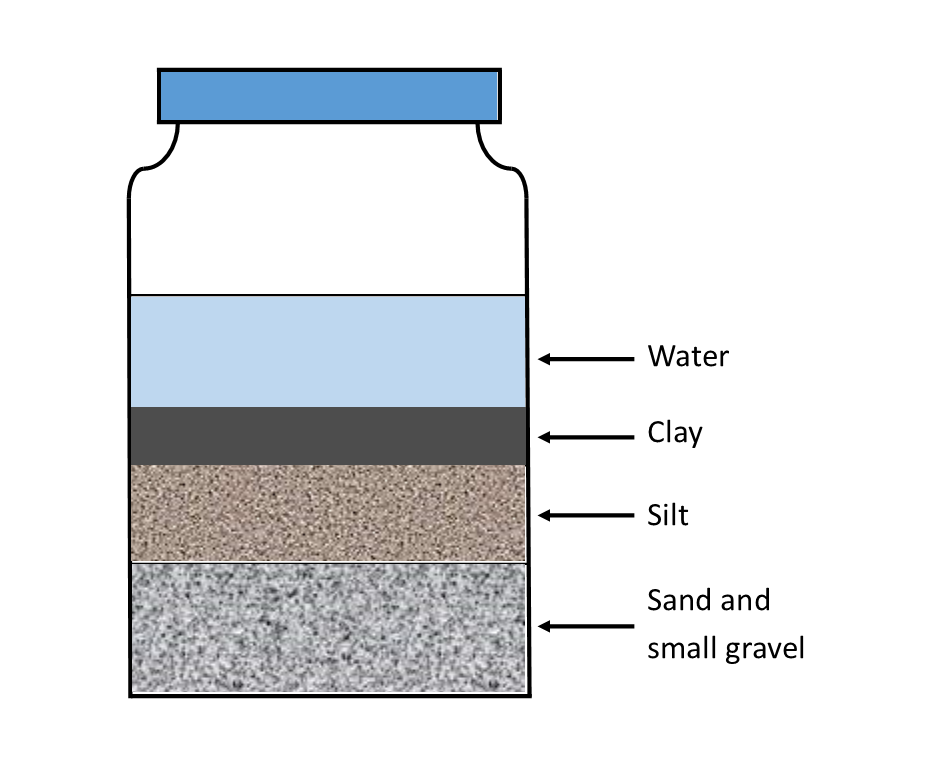
Figure 20. The jar method (image courtesy of Jim Scott).
The finger test:
A faster way to estimate texture is using the finger test. A sample of soil is mixed with water until it is fully hydrated. By rubbing the soil between your fingers, you will be able to distinguish between a predominantly sandy soil (gritty), a silty soil (silky but not sticky) and a clay soil (smooth and sticky). Further finger analysis can differentiate among soil types even further, as demonstrated by WSU soil scientist Dr. Craig Cogger in this video: https://www.youtube.com/watch?time_continue=305&v=0tRQUPDRiDU.
What to do instead of amending: Action items for gardeners and landscape professionals
There are several simple, low-cost gardening practices that will improve soil aeration and root health. Any practice that reduces soil compaction will increase aeration and drainage, and the best way to do this is to separate the soil from compacting forces.
- Estimate your soil texture before taking any actions: you have to know what you have before you can determine a management plan.
- Understand that you cannot change the character of your soil. Instead, select plants that will tolerate your soil type and manage the soil sustainably.
- Use the same planting material throughout containers to ensure optimal water and air movement.
- Do not amend the backfill soil when planting garden or landscape plants. Only the native soil should be used in the planting hole: textural continuity between the planting hole and surrounding soil is required for water and oxygen movement and subsequent root establishment.
- Use coarse, woody mulches to protect the soil, reduce compaction, and provide a slow feed of nutrients (Chalker-Scott, 2015).
- Avoid amending soils to change soil structure; mulching with coarse, chunky organic materials is more effective and less damaging to soil health.
- Avoid digging or otherwise working soil when it is wet, as this will increase compaction. Likewise, do not “firm up” soil during planting; let gravity carry the water and soil around the roots.
With climate change no longer just a theory but a clear threat to our way of life, it is crucial for gardeners to avoid adding to carbon dioxide levels. Soil tillage and amendment has been shown to increase microbial activity in the soil, releasing more carbon dioxide (Ogle et al., 2019). Preserving soil structure by minimizing disturbance and maximizing the use of protective mulches will help gardeners reduce their carbon footprint while optimizing plant and soil health.
Literature Cited
Abbey, T., and Rathier, T. (2005). Effects of mycorrhizal fungi, biostimulants and water absorbing polymers on the growth and survival of four landscape plant species. Journal of Environmental Horticulture, 23(2):108-111. https://www.hrijournal.org/doi/pdf/10.24266/0738-2898-23.2.108
Austin, M.E., and Bondari, K. (1992). Hydrogel as a field medium amendment for blueberry plants. HortScience 27:973–974. https://journals.ashs.org/hortsci/view/journals/hortsci/27/9/article-p973.xml
Blodget, A.M., Beattie, D.J., and White, J.W. (1993). Hydrophilic polymers and wetting agents affect absorption and evaporative water loss. HortScience 28(6):633-635. https://journals.ashs.org/hortsci/view/journals/hortsci/28/6/article-p633.xml
Bowman, D.C., Evans, R.Y., and Paul, J.L. (1990). Fertilizer salts reduce hydration of polyacrylamide gel and affect physical properties of gel-amended container media. Journal of the American Society for Horticultural Science 115(3):382-386. https://journals.ashs.org/jashs/view/journals/jashs/115/3/article-p382.xml
Chalker-Scott, L. (2007). Impact of mulches on landscape plants and the environment – a review. Journal of Environmental Horticulture 25(4):239-249. http://hrijournal.org/doi/pdf/10.24266/0738-2898-25.4.239
Chalker-Scott, L. (2015). Using arborist wood chips as a landscape mulch. WSU Extension Fact Sheet FS160E. https://www.researchgate.net/publication/315662938_Using_arborist_wood_chips_as_a_landscape_mulch_WSU_Extension_Fact_Sheet_FS160E.
Corley, W.L. (1984). Soil amendments at planting. Journal of Environmental Horticulture 2(1):27-30. https://hrijournal.org/doi/pdf/10.24266/0738-2898-2.1.27
Farrell, C., Ange, X.Q., and Rayner, J. (2013). Water-retention additives increase plant available water in green roof substrates. Ecological Engineering 52:112-118. https://www.researchgate.net/publication/235344343_Water-retention_additives_increase_plant_available_water_in_green_roof_substrates
Ferrini, F., and Baietto, M. (2007). Effect of compost-amended backfill and paved surface on leaf parameters and physiology of Norway maple (Acer platanoides L.) Arboriculture and Urban Forestry 33(6):386-391. http://joa.isa-arbor.com/request.asp?JournalID=1&ArticleID=3016&Type=2
Fonteno, W.C., and Bilderback, T.E. (1993). Impact of hydrogel on physical properties of coarse-structured horticultural substrates. Journal of the American Society for Horticultural Science 118(2):217-222. https://journals.ashs.org/jashs/view/journals/jashs/118/2/article-p217.xml
Foster, W.J., and Keever, G.J. (1990). Water absorption of hydrophilic polymers (hydrogels) reduced by media amendments. Journal of Environmental Horticulture 9(3):113-114. https://hrijournal.org/doi/abs/10.24266/0738-2898-8.3.113
Frantz, J.M., Locke, J.C., Pitchay, D.S., and Krause, C.R. (2005). Actual performance versus theoretical advantages of polyacrylamide hydrogel throughout bedding plant production. HortScience 40(7):2040-2046. https://journals.ashs.org/hortsci/view/journals/hortsci/40/7/article-p2040.xml
Gillman, E. (2004). Effects of amendments, soil additives, and irrigation on tree survival and growth. Journal of Arboriculture 30(5):301-304. https://www.researchgate.net/publication/289151481_Effects_of_amendments_soil_additives_and_irrigation_on_tree_survival_and_growth
Hallett, P.D. (2008). A brief overview of the cause, impacts and amelioration of soil water repellency – a review. Soil and Water Research 3:S21-S29. https://www.researchgate.net/publication/285827538_A_brief_overview_of_the_causes_impacts_and_amelioration_of_soil_water_repellency_-_A_review
Handrek, K., and Black, N. (2002). Growing Media for Ornamental Plants and Turf, 3rd ed. University of New South Wales Press. Sydney, NSW, Au. 542pp.
Harris, R., Clark, J.R., and Matheny, N.P. (2004). Arboriculture: Integrated Management of Landscape Trees, Shrubs, and Vines, 4th edition. Prentice-Hall Englewood Cliffs, New Jersey. 674p.
Hodel, D., Downer, A.J., Pittenger, D.R., and Beaudon, P.J. (2006). Effect of amended backfill soils when planting five species of palms. HortTechnology 16(3):457-460. https://journals.ashs.org/horttech/view/journals/horttech/16/3/article-p457.xml
Hodge, S.J. (2012). The effect of seven organic amendments on planting pit soil and tree performance. Arboriculture Journal 19(3):235-266. https://www.tandfonline.com/doi/abs/10.1080/03071375.1995.9747064
Hsieh, J.C., and Gardner, W.H. (1959). Water movement in soils (film). Washington State University. https://archive.org/details/educationforlifeadjustment_201512
Jackson M., Eadsforth, C., Schowanek, D., Delfosse, T., Riddle, A., and Budgen, N. (2016). Comprehensive review of several surfactants in marine environment: fate and ecotoxicity. Environmental Toxicology and Chemistry 35:1077-1086. https://www.researchgate.net/publication/283493378_Comprehensive_review_of_several_surfactants_in_marine_environment_Fate_and_ecotoxicity
Kim, S., Iyer, G., Nadarajah, A., Frantz, J.M., and Spongberg, A.L. (2010). Polyacrylamide hydrogel properties for horticultural applications. International Journal of Polymer Analysis and Characterization 15(5):307-318. https://www.researchgate.net/publication/233077046_Polyacrylamide_Hydrogel_Properties_for_Horticultural_Applications
MacDonald, J.D., Costello, L.R., Lichter, J.M., and Quickert, D. (2004). Fill soil effects on soil aeration and tree growth. Journal of Arboriculture 30(1):19-27. https://www.researchgate.net/publication/242595910_Fill_soil_effects_on_soil_aeration_and_tree_growth
Ogle, S.M., Alsaker, C., Baldock, J., Bernoux, M., Breidt, F.J., McConkey, B., Regina, K., and Vazquez-Amabile, G.G. (2019). Climate and soil characteristics determine where no-till management can store carbon in soils and mitigate greenhouse gas emissions. Scientific Reports 9:11665. https://www.nature.com/articles/s41598-019-47861-7.
Oostindie, K., Dekker, L.W., Wesseling, J.G., and Ritsema, C.J. (2008). Soil surfactant stops water repellency and preferential flow paths. Soil Use and Management 24:409-415. https://www.researchgate.net/publication/228747605_Soil_surfactant_stops_water_repellency_and_preferential_flow_paths
Rentz, J.A., Chapman, B., Alvarez, P.J.J., and Schnoor, J.L. (2003). Stimulation of hybrid poplar growth in petroleum-contaminated soils through oxygen addition and soil nutrient amendments. International Journal of Phytoremediation 5(1):57-72. https://www.researchgate.net/publication/10791890_Stimulation_of_Hybrid_Poplar_Growth_in_Petroleum-Contaminated_Soils_through_Oxygen_Addition_and_Soil_Nutrient_Amendments
Rowe, E.C., Williamson, J.C., Jones, D.L., Holliman, P., and Healey, J.R. (2005). Initial tree establishment on blocky quarry waste ameliorated with hydrogel or slate processing fines. Journal of Environmental Quality 34(3):944-1003. https://www.researchgate.net/publication/7852208_Initial_Tree_Establishment_on_Blocky_Quarry_Waste_Ameliorated_with_Hydrogel_or_Slate_Processing_Fines
Sarvas, M., Pavlenda, P., and Takacova, E. (2007). Effect of hydrogel application on survival and growth of pine seedlings in reclamations. Journal of Forest Science 53(5):204-209. https://www.agriculturejournals.cz/publicFiles/00192.pdf
Spomer, L.A. (1983). Physical amendment of landscape soils. Journal of Environmental Horticulture 1(3):77-80. https://hrijournal.org/doi/pdf/10.24266/0738-2898-1.3.77
Vanwalleghem, T., Stockmann, U., Minasny, B. and McBratney, A.B. (2013). A quantitative model for integrating landscape evolution and soil formation. Journal of Geophysical Research 118:331-347. https://www.academia.edu/4091541/A_quantitative_model_for_integrating_landscape_evolution_and_soil_formation
Watson, G.W., Kupkowski, G., and von der Heide-Spravka, K.G. (1993). Influence of backfill soil amendments on establishment of container-grown shrubs. HortTechnology 3(2):177-189. https://journals.ashs.org/horttech/view/journals/horttech/3/2/article-p188.xml

